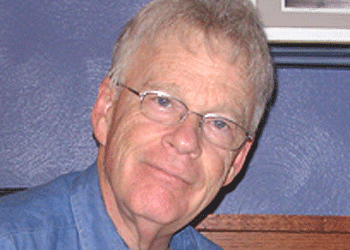In this week’s issue… Limbaugh lands up the dial – Krenn’s back in the Burgh – More FM for Burlington – My buys in Ontario – Remembering NH’s Blacksmith, NY’s Doubleday, Ontario’s Costley-White
By SCOTT FYBUSH
*Quick – what do you get if you combine a national sports morning show, an assortment of syndicated conservative talkers who’ve never gained much traction anywhere else in the market, and Rush Limbaugh in middays?
It’s the newest talk station in eastern MASSACHUSETTS, of course, and as we predicted last week, little WKOX (1430 Everett) is iHeart’s last-ditch move to retain a clearance for Limbaugh in market number ten when Entercom’s WRKO (680 Boston) pulls the plug on the show next week.
 “Talk 1430” will launch on WKOX next Monday with a lineup that’s even more makeshift than the last Clear Channel attempt to provide an in-house clearance for Limbaugh. When WXKS (1200 Newton) launched as “Rush Radio,” it at least had a local morning show with Jeff Katz to try to bring some Boston relevance to the format. This time, it will be Fox Sports Radio filling the Talk 1430 airwaves from 1-9 AM, which might as well be dead air for all that Boston has ever embraced sports talk from outside the market. Glenn Beck will precede Limbaugh from 9-noon, with Sean Hannity following Rush from 3-6 PM. “America Now,” Mark Levin and Clyde Lewis will round out the schedule, such as it is.
“Talk 1430” will launch on WKOX next Monday with a lineup that’s even more makeshift than the last Clear Channel attempt to provide an in-house clearance for Limbaugh. When WXKS (1200 Newton) launched as “Rush Radio,” it at least had a local morning show with Jeff Katz to try to bring some Boston relevance to the format. This time, it will be Fox Sports Radio filling the Talk 1430 airwaves from 1-9 AM, which might as well be dead air for all that Boston has ever embraced sports talk from outside the market. Glenn Beck will precede Limbaugh from 9-noon, with Sean Hannity following Rush from 3-6 PM. “America Now,” Mark Levin and Clyde Lewis will round out the schedule, such as it is.
For a comparison, we turn to Los Angeles and KEIB (1150), the “Rush and a bunch of other stuff” talker that iHeart created when it pulled Limbaugh off big-stick KFI (640) in 2014. With a 50,000-watt signal that covers a decent chunk of the market, a bit of external marketing and a lengthy period of cross-promotion to bring Rush listeners over from their long KFI habit, KEIB still hasn’t cracked a 1 share in the 12+ ratings. “Talk 1430” will launch with a far lesser signal and no promotional boost from WRKO; can it even get to an 0.5? (We’re betting on “not” – and what’s more, we’ll hazard a guess that WKOX’s talk ratings will be worse, both overall and in key demographics, than the station’s been doing with Spanish hits as “Mia 1430.”)
*Meanwhile at WRKO, morning host Jeff Kuhner has confirmed that he’ll replace Limbaugh in the noon-3 slot beginning next Monday. (He’s also making noises about going into syndication, which seems like a bit of a long shot.)
With Kuhner settled into middays, there are just two remaining shoes left to drop in this long Boston talk soap opera:
At WRKO, what will replace Kuhner in mornings? We’d heard rumors of a morning show co-produced with the Globe, but that was a while back and Entercom’s been good about maintaining, er, “radio silence” ever since. Will former channel 7 anchor Kim Carrigan, who auditioned as a Kuhner fill-in back in April, be part of it?
And what sort of a spoiler role might Salem play when it completes its purchase of WMKI (1260) from Radio Disney? Assuming Boston will get one of Salem’s “The Answer” talk formats, even the 1-share that Salem hosts such as Hugh Hewitt and Bill Bennett tend to draw could be a significant factor against WRKO, WKOX and WMEX (1510) as they all fight for the limited talk audience in town.
GROW WITH US! Fybush Media and RadioInsight have joined forces to provide a bigger ad sales platform for the broadcast and streaming industry. Are you the right fit to become our next sales professional? We’re seeking someone creative and energetic who knows his or her way around the radio, TV and streaming community. Generous commission and profit-sharing. Want to join our team? Let’s talk.
Fybush.com isn’t a mere website.
We’re a community.
And we take care of our community members. Do you have a piece of equipment you want to sell? Or one you want to buy? Are you looking for a job? An employee? We can help you with all of those searches and more! We offer classified ads at reasonable prices, seen by people in every part of the industry. Contact Lisa for details.
[private]
*Radio people on the move in NEW HAMPSHIRE: Scott Laudani has been promoted to director of programming for all eight of Binnie Media’s Granite State stations. He’s been with the company for a little more than a year, initially as PD of WFNQ (106.3 Nashua), and of course has been a veteran programmer for almost two decades with stops in Providence, New Haven and Scranton as well.
Over at iHeart Media on the Seacoast, Jeff Pierce is departing after 19 years with the company and its predecessors. Pierce has been at WERZ (107.1 Exeter) since 2007 and has been operations manager at the cluster since 2010. Before that, he was at the then-Clear Channel cluster in Bangor, and now he’s headed back to MAINE to become operations manager at Saga’s Portland Radio Group, overseeing talkers WGAN (560)/WZAN (970)/WGIN (1400), hot AC WMGX (93.1), classic hits WYNZ (100.9) and country WPOR (101.9).
 Back at iHeart in Portsmouth, they’re mourning Andy Blacksmith, part of the “Morning Buzz” cast on WHEB (100.3 Portsmouth) and WGIR-FM (101.1 Manchester). Blacksmith,a 17-year radio veteran, had been off the air since March, when he underwent surgery to try to keep his heart disease stable until a transplant could be found. Sadly, he didn’t make it long enough to get a new heart, and he died Saturday at Brigham and Women’s Hospital in Boston.
Back at iHeart in Portsmouth, they’re mourning Andy Blacksmith, part of the “Morning Buzz” cast on WHEB (100.3 Portsmouth) and WGIR-FM (101.1 Manchester). Blacksmith,a 17-year radio veteran, had been off the air since March, when he underwent surgery to try to keep his heart disease stable until a transplant could be found. Sadly, he didn’t make it long enough to get a new heart, and he died Saturday at Brigham and Women’s Hospital in Boston.
WHEB played best-of Blacksmith segments over the weekend and will pay tribute to him on Monday’s Morning Buzz show as well.
*Back in November, Jeff Shapiro’s Great Eastern group completed the long-planned relocation of an FM signal all the way across VERMONT (and then some). The station formerly known as WWOD (104.3 Hartford VT), then with later temporary calls of WMXR, WMVY and WECM, signed on last November from a new transmitter site near its new city of license of Keeseville, New York, with a class C3 signal reaching back across Lake Champlain to the Burlington market. WECM stunted with Christmas music through the holidays and then for a few months longer as “Santa 104.3” before falling silent again – but last Monday at noon, it finally launched a permanent format.
The new “Kiss 104.3” takes the WJKS calls last seen in southern New Jersey on what’s now WDEL-FM (101.7 Salem). Like that station, the new Burlington-market WJKS is aiming urban, a curious choice in the rather pale market of Burlington-Plattsburgh.
 Our content partner RadioInsight reports: “WJKS is utilizing Westwood-One’s recently launched Classic Hip-Hop network including Adam Bomb in mornings, Ms. Eklass in middays/afternoons, and Zakk at night.”
Our content partner RadioInsight reports: “WJKS is utilizing Westwood-One’s recently launched Classic Hip-Hop network including Adam Bomb in mornings, Ms. Eklass in middays/afternoons, and Zakk at night.”
*In CONNECTICUT, Susan Tully has been named VP/general manager at NBC’s WVIT (Channel 30). Tully, who’d been VP of news for NBC sister station KXAS (Channel 5) in Dallas/Fort Worth, started in her new job Friday, replaces Ric Harris, who’s now VP/GM at NBC’s WCAU (Channel 10) in Philadelphia.
*In western PENNSYLVANIA, the founding general manager of public station WESA (90.5 Pittsburgh) is stepping down. DeAnne Hamilton came to town from WKAR in East Lansing, Michigan in 2011 to oversee the challenge of transitioning the former WDUQ from Duquesne University ownership to Essential Public Media, the group that edged out the previous WDUQ management for the license. Hamilton hasn’t announced where she’s headed next (and doesn’t appear to have any concrete plans); Marco Cardamone, chair of the WESA board, will serve as interim GM until a replacement is named.
Across town, Steel City Media’s WLTJ (92.9 Pittsburgh) has replaced one veteran morning host with another one. The former “Q92.9” morning team of John Cline, Dave Cook and Maria D’Antonio is out, and as of July 6, it’ll be WDVE veteran Jim Krenn doing mornings. Krenn was at WDVE from 1988-2011 and has been podcasting and doing commentaries of KDKA (1020) since then. WLTJ midday jock Debbie Wilde will join Krenn and his podcast team of Terry Jones, Mike Sasson and Mike Wysocki on the new morning show.
Philadelphia’s number-two sports station, Greater Media’s WPEN (97.5 Burlington NJ), has hired yet another host formerly heard on its top-rated rival, CBS Radio’s WIP-FM (94.1). This time it’s Rob Ellis, who’s been hosting “Breakfast on Broad” on Comcast Sports Network since leaving WIP. He’s taking over the 10 AM-2 PM slot on “97.5 the Fanatic” alongside Harry Mayes starting today, bumping Eytan Shander to as-yet-undisclosed new duties with the station.
In Union City near Erie, WFSN-LP (96.7) has filed for a license to cover. The LPFM belongs to the Union City Family Support Center.
*Nelson Doubleday inherited a publishing fortune and used some of it to buy the NEW YORK Mets, but we remember him this week as the owner, at least briefly, of New York’s WHN (1050) and WAPP (103.5). Doubleday had been in radio in other markets (including St. Louis, Minneapolis, Denver and Washington) when he laid down $8.7 million in 1982 to buy what was then WTFM, a sleepy (but successful) easy-listening station in Queens. Under Doubleday’s ownership, the FM signal jumped into the vacuum left by WABC’s flip to talk, challenging WPLJ and the new WHTZ in one of the more memorable radio wars of the 1980s.
In 1985, Doubleday paid Mutual $13 million for WHN (1050) and then moved the country station out of Manhattan, combining it with WAPP in new studios deep in the bowels of the old Kaufman Studios in Astoria, Queens. A year later, Emmis bought WHN, WAPP and Washington’s WAVA-FM from Doubleday for $53 million, quickly flipping WHN to sports as WFAN and WAPP to rhythmic top-40 as WQHT; the rest, of course, was history.
Doubleday went on to sell the Mets (after a 1986 World Series victory) and the publishing company, too. He was 81 when he died June 17 at his home in Locust Valley, N.Y.
*Alan Almond was most closely associated with Detroit, where his mellow tones were part of the nighttime at WNIC (100.3) for decades, but his “Pillow Talk” show was also heard in other markets, including at Rochester’s WRMM-FM (101.3). Almond never made public appearances or allowed himself to be photographed (much like David Alan Boucher at Boston’s WMJX), but that mystique helped him build a fan base that remembered him long after WNIC ceased to exist. Almond’s body was found at his Michigan home last Tuesday; he was 67.
*The NEW JERSEY Broadcasters Association held its 68th annual convention last week in Atlantic City. We weren’t there (your editor was wearing yet another of his many hats all week, filling in for a vacationing local talk host), but broadcast consultant and friend-of-the-column Clark Smidt was among the NERW readers in the crowd, and he submitted his notes –
 Last week’s June 17-18, event in Atlantic City was a content champion, who’s who with military precision and excellent atmosphere. Once again, the NJBA Convention presented a showcase to learn, opportunity to network with the best and be an up to the minute focal point of breaking events. “Broadcast Has a New Attitude” theme captured the atmosphere.
Last week’s June 17-18, event in Atlantic City was a content champion, who’s who with military precision and excellent atmosphere. Once again, the NJBA Convention presented a showcase to learn, opportunity to network with the best and be an up to the minute focal point of breaking events. “Broadcast Has a New Attitude” theme captured the atmosphere.
Sun Broadcast Group Founder & CEO Jason Baily added unprecedented support and breakthrough content delivery as the SBG partnership with Shazam made every minute available everywhere from smart phone to world-wide. The strategic New Jersey location, strategy and Paul Rotella’s team brought out the Best from the Garden State, New York City and Washington, D.C. In between, the ever present musically gifted NJ National Guard, “Paul’s Behind The Scene All Star Team” of outstanding friends and impressive sons, this was a 10 scale 14!
Before 11am, the agenda brought us Paul, NJBA Chairman Dave Coskey, Sub Broadcast CEO Jason Baily and NJ Army National Guard Major Andrew Lazarchick’s positive introductions to set the stage. A personal Next Radio Smartphone FM Chip update from founding catalyst Jeff Smulyan, a special audio multi-platform total measurement announcement from Nielsen’s Rich Tunkel and Jon Miller and a Who’s Who Super Session hosted by Jason Bailey, followed. On stage and dueling jumbo-trons were Emmis CEO Jeff Smulyan, Shazam CEO Rich Riley, Borrell Associates CEO Gordon Borrell, Emerson Research guru Sean “Ross on Radio,” iHeart SVP Owen Grover, Bold Gold Media CEO Vince Benedetto, Livestream GM Clayton Rose and Group M Sr. Partner Taylor Wood. Convention participants included Emmis NYC Market Manager Deon Levingston, Buckley CEO Joe Bilotta, Susquehanna Emmeritus Dave Kennedy, Philadelphia radio statesman Art Camiolo, NJ leaders including Longport’s Don Coskey, Townsquare’s Greg Janoff, Press Communication’s Rich Morena, Greater Media’s Hall of Fame inductee Dan Finn presented by CEO Peter Symth, Professor Dick Taylor and legal mavens John Griziglia, Dave Oxenfod and Frank Montero.
Super Sessions followed:
- Radio Reporters Roundtable including Fox News Channel Chief National Correspondent Jim Angle, WCBS PM Drive Anchor Wayne Cabot, CBS Chief Congressional Correspondent Steven Portnoy and ABC’s Scott Goldberg.
- The Changing Ratings Game presented by Research Director Partner Charlie Sislen, Nielsen’s Rich Tunkel and Jon Miller announcing Total Audience Measurement innovations.
- Creative in Today’s Audio World with the insights of VP iHeart Creative Services Group Dave Savage.
- The Future of Sales & Marketing Teams explained by Gordon Borell.
- From Student to Star guided by NJBA Life member & Professor Dick Taylor with WPLJ midday personality Race Taylor.
The Awards lunch highlighted by the special appearance, All-American address by Humanitarian of the Year Honoree, Fox Senior Analyst The Honorable Judge Andrew Napolitano was inspiring. The logistical precision of the events, production, music and timing was awesome.
Truth, preservation of the Constitution, halting intolerable taxation acts and providing live, local, emergency service are essential missions of State Broadcasting Associations. When a gentleman who takes pride in Country, broadcasting, his home state, details, taking care of friends and extreme pride of family puts it all together, get outta the way. June 22-23, 2016 is a MUST for the 69th New Jersey Conference. Thank you, Sir Paul.
(Our content partner Lance Venta at RadioInsight was also at NJBA and has a report here.)
 *CANADA‘s fastest-growing small-market radio group is growing again. My Broadcasting is buying out Cobourg-based Pineridge Broadcasting, adding classic hits CHUC (107.9 the Breeze) and AC CKSG (Star 93.3) in Cobourg and AC CJWV (Magic 96.7) in Peterborough to its 17 existing stations. My’s purchase will close out the broadcast career of Pineridge president Don Conway, who’ll retire when the deal closes. In a statement, Conway called My “the ideal choice” to keep “super-serving the local community.”
*CANADA‘s fastest-growing small-market radio group is growing again. My Broadcasting is buying out Cobourg-based Pineridge Broadcasting, adding classic hits CHUC (107.9 the Breeze) and AC CKSG (Star 93.3) in Cobourg and AC CJWV (Magic 96.7) in Peterborough to its 17 existing stations. My’s purchase will close out the broadcast career of Pineridge president Don Conway, who’ll retire when the deal closes. In a statement, Conway called My “the ideal choice” to keep “super-serving the local community.”
No purchase price has been announced for the deal yet. In Peterborough, already one of My’s biggest markets, CJWV joins My’s existing sports-talk CJMB (Extra 90.5 FM); in Cobourg, CHUC and CKSG will extend a My chain of stations that already stretches eastward along the Lake Ontario shore through Brighton, Napanee and Gananoque.
(NERW notes that the sale in Cobourg, in particular, leaves nearby Belleville as an even more notable exception to the trend of chain broadcasting across small-market Ontario. Both clusters in Belleville, Quinte Broadcasting’s three stations and Starboard Broadcasting’s two FMs, remain locally owned.)
*Speaking of local ownership, Blackburn Radio is the latest incarnation of a long tradition in western Ontario, and last week it lost its leader, far too young. Richard Costley-White took over Blackburn in 2005 from the estate of his mother, Martha Blackburn, who’d died in 1992 at age 47. After Martha Blackburn’s death, the company sold off what had been its flagship properties in London: CFPL(AM)/CFPL-FM went to Shaw (later Corus), CFPL-TV to Baton Broadcasting (later CTV/Bell Media) and the London Free Press, which had been in Blackburn family hands since its founding in 1856, ended up with Sun Media.
Costley-White began rebuilding Blackburn with what remained: he added a second FM signal, CIBU (94.5) to CKNX(AM)/CKNX-FM up in Wingham, put new FMs on the air in Windsor and Leamington, added nested FM relays to CFCO (630) in Chatham-Kent and CHOK (1070) in Sarnia, and brought Blackburn back into London with the debut of CKLO (98.1 Free FM) in 2011.
Costley-White had been diagnosed with lymphoma of the central nervous system last year and appeared to be in remission earlier this year. The disease returned a few weeks ago and progressed quickly. Costley-White, who was just 48 when he died on Tuesday, had said he intended for the Blackburn stations to stay in his family. He’s survived by his wife, Caitlin Adamson, and two young sons.
*In the Maritimes, the CBC has been busy moving out of old facilities into newer, more compact ones. Its Halifax radio and TV stations moved a few months ago, and now it’s Moncton, New Brunswick making the move.
After 40 years in the big brick building at 250 University Avenue, the local services of CBC radio (CBAM 106.1) and Radio-Canada (CBAF 88.5 and CBAFT-TV 11) moved on Friday into smaller open-plan quarters at 165 Main Street.
The 61,000-square foot University Avenue building and the 1.55-acre property on which it sits is now listed for sale.
[/private]
SPRING IS HERE…

And if you don’t have your Tower Site Calendar, now’s the time!
If you’ve been waiting for the price to come down, it’s now 30 percent off!
This year’s cover is a beauty — the 100,000-watt transmitter of the Voice Of America in Marathon, right in the heart of the Florida Keys. Both the towers and the landscape are gorgeous.
And did you see? Tower Site of the Week is back, featuring this VOA site as it faces an uncertain future.
Other months feature some of our favorite images from years past, including some Canadian stations and several stations celebrating their centennials (buy the calendar to find out which ones!).
We still have a few of our own calendars left – as well as a handful of Radio Historian Calendars – and we are still shipping regularly.
The proceeds from the calendar help sustain the reporting that we do on the broadcast industry here at Fybush Media, so your purchases matter a lot to us here – and if that matters to you, now’s the time to show that support with an order of the Tower Site Calendar. (And we have the Broadcast Historian’s Calendar for 2025, too. Why not order both?)
Visit the Fybush Media Store and place your order now for the new calendar, get a great discount on previous calendars, and check out our selection of books and videos, too!
From the NERW Archives
Yup, we’ve been doing this a long time now, and so we’re digging back into the vaults for a look at what NERW was covering one, five, ten, fifteen and – where available – twenty years ago this week, or thereabouts.
Note that the column appeared on an erratic schedule in its earliest years as “New England Radio Watch,” and didn’t go to a regular weekly schedule until 1997.
One Year Ago: June 23, 2014
*Way back in February 2007, NERW readers were the first to know that Cumulus was laying plans to move longtime suburban NEW YORK radio staple WFAS-FM (103.9) from Westchester County into the Bronx. But even as we were correctly predicting that a city-of-license change from White Plains to Bronxville would be followed by an application to move its transmitter from Greenburgh to the top of the Montefiore Medical Center, we couldn’t have anticipated that it would take more than seven years to consummate the relocation.
 In fact, while the new facility was built and tested fairly quickly, the CP to move to the Bronx with 980 watts/532′ expired in 2011 without being licensed, only to be refiled and once again to near expiration this July 27. But this time, the new 103.9 signal will be licensed, and by Independence Day it will be on the air as New York City’s newest FM signal. In fact, while the new facility was built and tested fairly quickly, the CP to move to the Bronx with 980 watts/532′ expired in 2011 without being licensed, only to be refiled and once again to near expiration this July 27. But this time, the new 103.9 signal will be licensed, and by Independence Day it will be on the air as New York City’s newest FM signal.
Cumulus will make the official announcement about its fourth outlet in its cluster at a media/sponsor event to be held Wednesday night at Sylvia’s soul food restaurant in Harlem, but if the venue isn’t enough of a clue, the signal should be: if you’ve got a minimal class A facility that will be strong mostly in the Bronx and upper Manhattan, and if you’re the one big cluster in the city that’s not yet vying for an urban audience, R&B is the way to go, apparently with an adult flavor.
*There’s a big change coming to the TV market in western MASSACHUSETTS with the surprise exit of a local owner. John Gormally. In 2007, Gormally made a splash by paying Sinclair $21.2 million for WGGB (Channel 40), which was something of an anomaly as a standalone ABC affiliate in a company that was already big into duopolies and even larger clusters. Gormally invested in upgrading WGGB’s local news presence, long a second-place contender against the market’s perennially dominant NBC affiliate, LIN’s WWLP (Channel 22), and he added a second network with the launch of “Fox 6” on a WGGB subchannel.
But even the benefits of local ownership (not to mention synergy with Gormally’s Business West newspaper) couldn’t pull WGGB ahead of WWLP, and now Gormally is selling WGGB/Fox 6 to the other operator in town who’s challenging LIN and WWLP. Meredith Broadcasting has been a fixture for decades in the Hartford market, just to the south, where it owns CBS affiliate WFSB (Channel 3). Back in 2003, WFSB spun off a satellite operation in Springfield, putting WSHM-LP (Channel 67, later DTV 21) on the air as “CBS 3 Springfield,” with separate local news and ad sales for the Massachusetts communities that used to get CBS from WFSB.
And now Meredith is paying Gormally $53.8 million for WGGB, more than doubling what Gormally paid for the station seven years ago. How can one company own the ABC, CBS and Fox affiliates in a single small market, especially at a time when the FCC is cracking down on such consolidations? Blame (or credit, if you prefer) the way in which regulation hasn’t quite kept pace with market realities in the last few years. The ownership cap system still in use at the FCC is based on the idea that a “station” and a “license” are the same thing, an assumption that no longer works in our new era of DTV multicast channels like “Fox 6.” What’s more, because “CBS 3” is a low-power license, it doesn’t count against ownership caps at all – so as far as the FCC is concerned, Meredith is actually a new entrant into the Springfield full-power market, where its purchase of WGGB will make it only a one-station owner under the rules.
Five Years Ago: June 20, 2010
The future of digital radio in the United States remains a hot topic for debate whenever broadcast people get together. North of the border in CANADA, however, the debate is over: the L-band Eureka-147 DAB system that launched to extensive fanfare just over a decade ago is now dead.
Last week, the CBC notified Industry Canada that it’s pulling the plug on its DAB transmitters, beginning with the multiplex in Montreal that carried two English and two French radio signals. While the CRTC has not yet given public notice of CBC shutdowns at its other digital transmitters, we checked with the lone Canadian DAB receiver owner we know – and he reports that as of Friday, the CBC multiplex on “channel LF” (1461 MHz) was indeed off the air. (Thanks to Bill Hepburn for his monitoring assistance with these!)
With the CBC signals gone, it’s a pretty good bet that the remaining commercial DAB signals will soon disappear as well. In Toronto, Bill reports that many of the stations on the three remaining multiplexes had no audio on Friday; out of 15 stations that were supposed to be available, only nine had audio – and that audio, he reports, was “internet-quality.”
While digital radio fades away, the pressure for new analog signals continues unabated. This week marks the end of a frequency test aimed at squeezing yet another FM signal into the crowded Toronto dial. Since May 31, “CARN Radio” has been testing from the First Canadian Place transmitter site, reportedly with about 500 watts, as Fitzroy Gordon attempts to find a workable dial position for the Caribbean-focused station the CRTC licensed to him back in 2006. CBC, which operates Radio One outlet CBLA on 99.1 from First Canadian Place, objected to Gordon’s proposed use of the second-adjacent 98.7 frequency, which would normally have been the end of that story – but Canada’s heritage minster intervened to authorize the test on 98.7. It’s not yet clear when a decision will be made about whether CARN can use 98.7 as a permanent frequency.
The week’s big news from NEW YORK came from the Capital District, where veteran morning man Don Weeks announced that when his contract is up later this year, he’s retiring from WGY (810 Schenectady) after 30 years on the job. Weeks, who’s 71, has been on the air in the Albany market since 1956, including a stint as a top-40 DJ at WTRY (980, now WOFX) and a long run doing weather and hosting the kiddie shows on WAST (Channel 13, now WNYT). Last year, he was inducted into the New York State Broadcasters Association Hall of Fame (and indeed, that’s where this picture of him was taken!) “It has been a great run but I want time now to pursue some other interests,” Weeks said in a statement; WGY says it will launch the proverbial national search to find a replacement for WGY’s morning slot.
Ten Years Ago: June 19, 2005
If you’re looking to buy TV ad time on a full-power station in VERMONT, you’re down to just three choices after the recent sale of ABC affiliate WVNY (Channel 22) in Burlington and a subsequent joint sales agreement with the owners of crosstown Fox affiliate WFFF (Channel 44).
Here’s what’s going on down by the shore of Lake Champlain: C-22 License Subsidiary, the owner of WVNY, recently won FCC permission to sell the station to a company called Lambert Broadcasting of Burlington, controlled by Michael Lambert of Beverly Hills, California. Under the terms of the $10.5 million deal, Lambert will then enter into the joint sales agreement with Smith Media, part of the Smith group that already owns WFFF. While the deal will keep Smith from having an attributable ownership interest in WVNY (which would be illegal in a market as small as Burlington, with just four commercial TV stations and thus no possibility of a legal TV duopoly), it will put Smith in charge of most of the operations of WVNY. Smith will handle WVNY’s ad sales (though with a provision barring it from forcing ad buyers to buy WVNY and WFFF in combination), publicity, routine engineering functions and will provide no more than 15% of WVNY’s programming.
That programming is expected to include at least some local news, which is one area in which the deal could benefit viewers in the Burlington market. WFFF has never offered local news, and WVNY’s history with news has been a troubled one; the station cancelled its last (and most ambitious) attempt at local news last year after failing to make enough of a dent against market giants WCAX (Channel 3) and WPTZ (Channel 5). The hope, apparently, is that WVNY and WFFF together might be more of a contender than either station would have been alone. (The prospect of local news on WFFF raises questions, too: the station currently serves as both the Fox and WB outlet in the market, delaying WB’s 8-10 PM primetime offerings to a “WB Time” block that runs from 10-midnight each night; would a 10 PM WFFF newscast get in the way of that?) Operations of both stations will apparently be consolidated at WFFF’s facility in Colchester, sooner or later.
On the TV side, it marked the end of an era – not just in Boston, but in local TV everywhere – when WCVB (Channel 5) president/general manager Paul LaCamera announced last week that he’s stepping down as general manager on August 1 and as president at year’s end. LaCamera has been with WCVB since its 1972 sign-on, and he’s managed the station since 1988. Under his leadership, the station won a well-deserved reputation as one of the best local TV outlets in the country, and it will be interesting indeed to see whether his successor, Bill Fine of Hearst-Argyle’s WBAL-TV (Channel 11), will be able to maintain that reputation. (NERW wonders, in particular, whether WCVB icon Natalie Jacobson will be inclined to stick around for a new contract after the departure of LaCamera, to whom Jacobson and other station veterans are personally loyal.)
In any event, we join the rest of the industry in saluting LaCamera for his work over the decades at WCVB, and we wish him well on his retirement. (2010 update: Some retirement – LaCamera soon ended up being hired to run public station WBUR, where he can still be found today.)
Fifteen Years Ago: June 23, 2000
We begin this week in CANADA, where precisely a year after CBL Toronto said its final “adieu” on 740 and moved to FM for good, the CRTC is announcing its successor on the 50 kilowatt blowtorch frequency. The nod goes to Michael Caine’s CHWO (1250 Oakville), which will move its adult-standards format down the dial to 740 by next June under the moniker “PrimeTime Radio.” Caine persuaded the CRTC that listeners over the age of 55 are underserved on the Toronto dial, and says his station will serve as an “oasis” in the midst of the rock that dominates Toronto FM. NERW expects the new 740 to use the existing CBC transmitter plant in Hornby, but we’re keeping an eye out for construction at the CHWO site as well.
It turns out 1250 won’t go silent as a result of the move; the CRTC says Caine can lease that facility out to the Christian broadcasters who now lease 50 hours a week on CHWO sister station CJMR (1320 Mississauga). When they take over as “Joy 1250,” CJMR will become all-ethnic (largely Asian languages).
Over on the FM side, the CRTC handed out two more licences, expected to be the last available in Canada’s largest city. B. Denham Jolly, who had applied unsuccessfully for the 92.5 channel (now CISS) and the 99.1 facility (now CBC’s CBLA), finally gets his FM under the name “Milestone Radio.” The urban-formatted station will be on 93.5 with 298 watts — a perfect spot, really, to usurp the Toronto listeners who now hear the format on Buffalo’s WBLK (93.7 Depew NY). (A minority interest in Jolly’s station will be held by Standard, which already owns CFRB and CKFM in Toronto, but the CRTC says this will not constitute an illegal LMA).
The last licence goes to Gary Farmer’s Aboriginal Voices Radio, whose station will be the first in Toronto aimed at a native audience. AVR asked for both 740 AM and 106.5 FM; they were granted only the FM, with 250 watts. NERW wonders what *that* channel will sound like in the summer when reception heats up over the water path across the lake to co-channel 50-kilowatt WYRK Buffalo, which can usually be heard in Toronto on a warm day. All three stations are expected on the air by June 2001.
Twenty Years Ago: June 17, 1995
From our Southern Rhode Island department: WUAE-FM 99.7 in Wakefield RI is on the air. The station is the latest project of Bear Broadcasting, which just last week closed its sale of WWRX-FM 103.7 Westerly-Providence to Radio Equity Partners. WUAE doesn’t have WWRX’s earth-shattering signal, but it seems to be getting out pretty well for a straight class A. (It shares WWRX’s site in Exeter, RI). The format is modern rock (the second in Rhode Island, after Brown University-affiliated WBRU 95.5), and the non-ID is “The Edge.” Bear still owns WHIM 1110 in East Providence and WERI 1230 in Westerly as well. |












